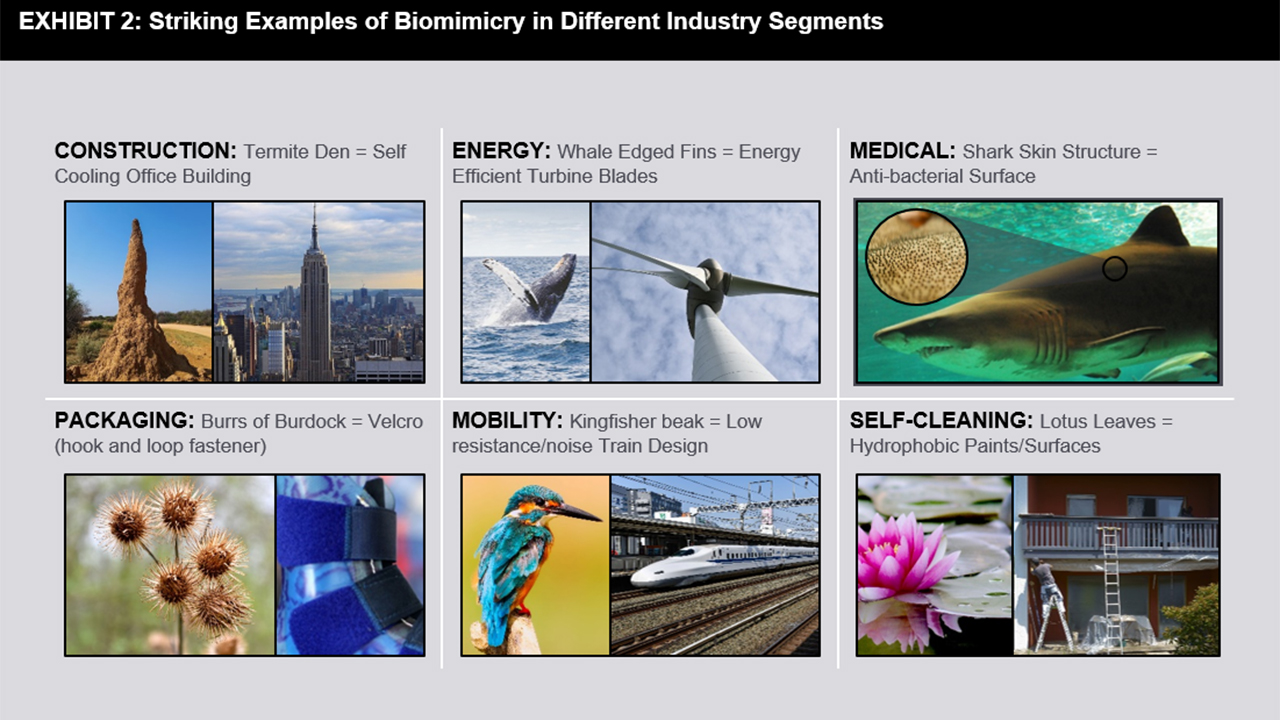Biomimicry, the practice of drawing inspiration from nature to solve complex human problems, has emerged as a transformative force in design and innovation. By observing and emulating the efficiency, resilience, and elegance of natural systems, biomimicry is ushering in a new era of sustainable and groundbreaking solutions across various industries. This approach, rooted in the deep well of biodiversity, offers valuable insights into solving some of humanity’s most pressing challenges.
One of the most remarkable aspects of nature is its ability to adapt and thrive in diverse environments. The principles of biomimicry encourage designers and engineers to study organisms and ecosystems that have evolved over millions of years to find ingenious solutions to survival. For example, the lotus leaf’s self-cleaning ability, inspired by the plant’s micro-structured surface, has given rise to innovative self-cleaning materials, coatings, and textiles. Such technologies reduce the need for harsh chemicals and energy-intensive cleaning processes, thus minimizing environmental impacts.
Another fascinating area where biomimicry is making waves is in the field of architecture and construction. Termite mounds, for instance, have influenced the design of energy-efficient buildings. The intricate ventilation systems within these mounds have inspired architects to create naturally ventilated structures that require less energy for cooling and heating. This not only reduces energy consumption but also lowers greenhouse gas emissions, contributing to a more sustainable built environment.
Biomimicry also holds immense potential in the realm of transportation. The study of bird flight has led to the development of more aerodynamic and fuel-efficient aircraft designs. By mimicking the shape and wing structure of birds, engineers have achieved significant improvements in fuel economy and reduced carbon emissions. Furthermore, the study of fish schools and flocking birds has informed the development of autonomous vehicle algorithms, enhancing traffic flow and safety on our roads.
The world of medicine and healthcare is not exempt from the transformative power of biomimicry. The human body itself serves as a source of inspiration. The design of surgical instruments and medical devices often takes cues from the efficiency and precision of biological systems. For instance, the development of needleless injection systems drew inspiration from the proboscis of mosquitos, which can penetrate skin with minimal pain. This innovation has improved patient comfort and reduced the risk of infection.
Biomimicry is also advancing the field of materials science. Spider silk, renowned for its exceptional strength and lightweight properties, has inspired the development of synthetic materials with similar characteristics. These bio-inspired materials have applications in industries ranging from aerospace to fashion, offering a sustainable alternative to conventional materials with a reduced ecological footprint.
In addition to these practical applications, biomimicry also serves as a powerful reminder of our interconnectedness with nature. It encourages a shift in perspective, reminding us that nature is not merely a resource to exploit but a mentor to learn from and respect. As we delve deeper into the natural world to unlock its secrets, we gain a greater appreciation for the intricacies and beauty of the ecosystems that sustain life on Earth.
In conclusion, biomimicry is more than just a design approach; it is a testament to the incredible wisdom of the natural world. By looking to nature’s blueprints, we have the opportunity to revolutionize our approach to innovation, making it more sustainable, efficient, and harmonious with the environment. As biomimicry continues to evolve, it holds the promise of addressing some of the most pressing challenges of our time while fostering a deeper connection between humanity and the natural world. This emerging field offers a glimpse into a future where human ingenuity is not just a force for progress but a force for harmony with the planet we call home.








